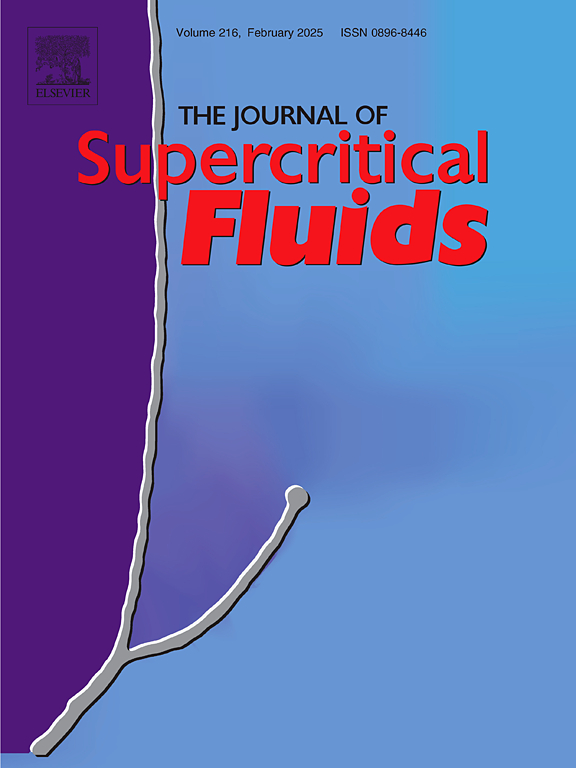Assessment of supercritical CO₂ treatment on historical cotton, leather, and paper from the Auschwitz-Birkenau State Museum
IF 4.4
3区 工程技术
Q2 CHEMISTRY, PHYSICAL
引用次数: 0
Abstract
This study aimed to evaluate the impact of supercritical carbon dioxide (scCO₂) disinfection on the surface integrity of both model and historical materials, including leather, cotton, and paper. The historical samples analyzed belong to the collection of the Auschwitz-Birkenau State Museum (ABSM). Two different process parameteres for scCO₂ treatments were tested. Post-treatment surface conditions were assessed through Scanning Electron Microscopy (SEM), Fourier Transform Infrared Spectroscopy (FTIR), and X-ray Photoelectron Spectroscopy (XPS). The results revealed notable surface degradation under the tested conditions. Leather samples exhibited delamination, cracking, and material loss. Cotton samples showed surface erosion and discoloration, while historical paper exhibited slight fraying along fiber edges, potentially due to partial binder removal. In conclusion, the scCO₂ treatments applied in this study adversely affected the surface properties of the tested materials. However, these findings are specific to the chosen process parameters, and alternative conditions may yield better compatibility with historical materials. Further research is needed before excluding this method for heritage conservation purposes.
对奥斯威辛-比克瑙国立博物馆的历史棉、皮革、纸张进行超临界二氧化碳处理的评价
本研究旨在评估超临界二氧化碳(scCO₂)消毒对模型和历史材料(包括皮革、棉花和纸张)表面完整性的影响。分析的历史样本属于奥斯威辛-比克瑙国家博物馆(ABSM)的收藏。测试了两种不同的scCO₂处理工艺参数。通过扫描电镜(SEM)、傅里叶变换红外光谱(FTIR)和x射线光电子能谱(XPS)评估处理后的表面状况。结果表明,在测试条件下,表面有明显的降解。皮革样品表现出分层、开裂和材料损失。棉花样品显示表面侵蚀和变色,而历史纸张显示纤维边缘轻微磨损,可能是由于部分粘合剂去除。总之,本研究中使用的scCO₂处理对测试材料的表面性能产生了不利影响。然而,这些发现是特定于所选工艺参数的,替代条件可能会产生与历史材料更好的兼容性。在将这种方法排除在文物保护之外之前,需要进一步的研究。
本文章由计算机程序翻译,如有差异,请以英文原文为准。
求助全文
约1分钟内获得全文
求助全文
来源期刊

Journal of Supercritical Fluids
工程技术-工程:化工
CiteScore
7.60
自引率
10.30%
发文量
236
审稿时长
56 days
期刊介绍:
The Journal of Supercritical Fluids is an international journal devoted to the fundamental and applied aspects of supercritical fluids and processes. Its aim is to provide a focused platform for academic and industrial researchers to report their findings and to have ready access to the advances in this rapidly growing field. Its coverage is multidisciplinary and includes both basic and applied topics.
Thermodynamics and phase equilibria, reaction kinetics and rate processes, thermal and transport properties, and all topics related to processing such as separations (extraction, fractionation, purification, chromatography) nucleation and impregnation are within the scope. Accounts of specific engineering applications such as those encountered in food, fuel, natural products, minerals, pharmaceuticals and polymer industries are included. Topics related to high pressure equipment design, analytical techniques, sensors, and process control methodologies are also within the scope of the journal.
 求助内容:
求助内容: 应助结果提醒方式:
应助结果提醒方式:


